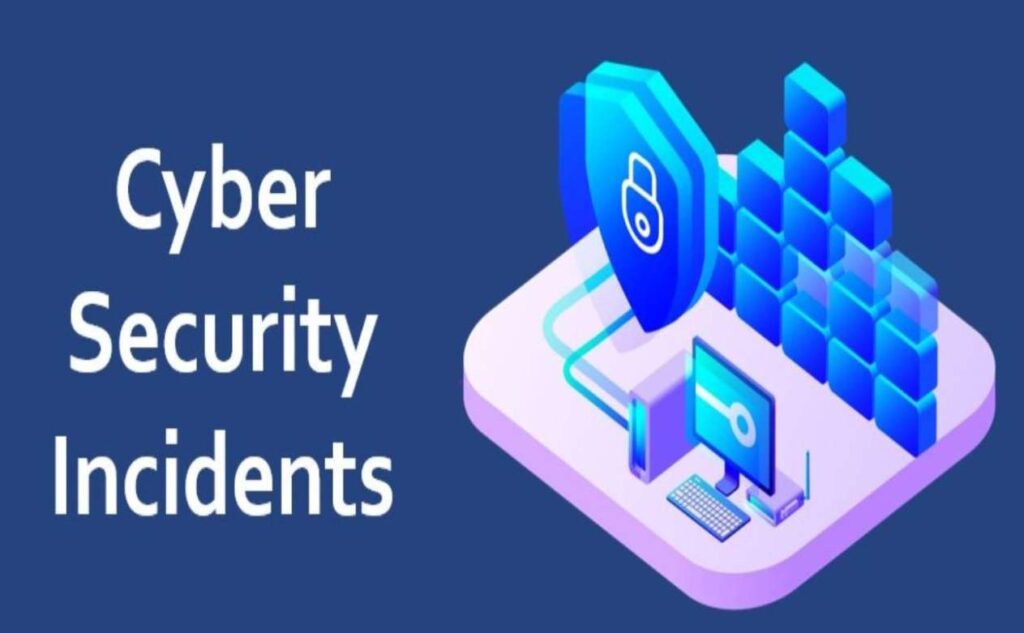What is Incident Response
The techniques and tools a company uses to identify and react to cyber threats, security breaches, or cyber-attacks are called incident response (also known as cyber security incident response). Cyber security teams can minimize or stop damage with the use of a formal incident response strategy.
The main goal of Incident Response is to catch the problem early and fix it quickly. This helps to reduce the damage and cost caused by the incident. Organizations have a plan called an Incident Response Plan that tells them exactly what to do when an incident occurs.
Having a good Incident Response Plan is very important. It helps the security teams find and stop the threat faster. It also helps them fix any affected systems and get things back to normal. According to IBM’s Cost of a Data Breach 2022 Report, companies that have incident response teams and regularly evaluate their incident response plans (IRPs) have an average data breach cost of USD 2.66 million less than companies with no incident response plan. Organizations with a strong plan in place often spend less money dealing with incidents than those without one.
What is Incident Response

Security incidents are like surprise visits from troublemakers in our digital world. They range from sneaky viruses invading our computers to shady characters trying to swipe our passwords. It risks the confidentiality, integrity, or availability of an organization’s information systems or sensitive data. There are different kinds of security incidents, but they all cause problems. That’s why it’s crucial to have a plan for dealing with security incidents.
Common types of Security Incidents are:
Malware attacks:
Malware is like a nasty cold for your computer. It’s a type of software that can sneak in and cause all sorts of trouble. Sometimes, it slows your computer down, and other times, it might steal your information or delete your files. Malware can come from different places, like a bad website or an email attachment. It’s a big problem that affects a lot of people. A study by AV-TEST found that there are over 1.2 billion malware programs out there. That’s more than the number of people living in some countries. It’s important to protect your computer from malware using special antivirus software and being careful about what you click on or download.
Phishing scams
Phishing is when a bad person tries to trick you into giving them your private information, like your passwords or credit card numbers. They might send you a fake email that looks like it’s from your bank or a store you like. The email might say something scary, like your account is locked, and you need to click a link to fix it. But if you do, it takes you to a fake website where they can steal your information. Phishing is a common way for hackers to get what they want. A report by Verizon says that 30% of phishing emails are opened, and 12% of people click on the bad links inside, which creates a lot of chances for hackers to steal from you.
Denial-of-Service (DoS) attacks
A Denial-of-Service attack is like a traffic jam on the internet. Imagine you’re trying to visit your favorite website, but it’s going super slow or won’t load at all. That might be because a hacker is sending too much traffic to the website, making it hard for anyone else to use it. A survey by Neustar found that 75% of companies experienced at least one DoS attack, and these attacks can cost businesses a lot of money. To help prevent DoS attacks, websites can use special tools to filter out the bad traffic and keep things running smoothly for everyone else.
Unauthorized access
Unauthorized access is like someone entering your room without asking. It’s when a person gets into your computer or online accounts even though they don’t have your permission. This can happen if someone guesses your password or finds a way to bypass security measures. Once they’re in, they might snoop around, steal your information, or even change things without you knowing. It’s a severe problem because it’s like a stranger going through your private stuff.
To protect yourself, use strong, unique passwords and enable extra security features like two-factor authentication when possible.
Data breaches
Data breaches can happen when hackers break into a company’s computer systems or someone accidentally leaves important information where others can find it. These breaches can be very harmful because the stolen information can be used for identity theft or other crimes.
According to a report by IBM, the global average cost of a data breach in 2023 was USD 4.45 million, a 15% increase over 3 years. Companies have to work hard to protect the information they collect and store.
Insider threats
An insider threat is when someone who works for a company uses their special access to do something bad. The person might be angry at the company, or they might be trying to make money by selling secret information. They could delete important files, share private data with others, or even put viruses on the company’s computers.
Insider threats can be challenging to catch because the person already has permission to be in the computer systems. To help prevent insider threats, companies can closely monitor what employees are doing with their access and teach them about the importance of security.
Ransomware
Ransomware is like the kidnapping of your computer files. It’s like a bad guy sneaks into your computer and puts all your important documents, photos, and videos in a locked box. They then send you a note saying you have to pay them money to get the key and unlock your files. This is what ransomware does. It encrypts your files so you can’t use them and demands payment to get them back. It’s scary because you might lose access to your homework, family pictures, or other valuable information.
IoT attacks
IoT stands for “Internet of Things,” which refers to all the smart devices we use daily, like security cameras, thermostats, and even toys. These devices make our lives easier, but they can also be a way for hackers to sneak into our networks. IoT attacks are becoming more frequent as more devices connect to the internet. A study by Palo Alto Networks found that 98% of IoT device traffic is unencrypted, making it easier for hackers to intercept. To protect your devices, change default passwords, update software, and be careful about what you connect to your network.
Social engineering
Social engineering is when a hacker tries to trick you into helping them like a wolf pretending to be a friendly sheep. They might send you an email that looks like it’s from your friend, asking you to click on a link or download a file. But if you do, it could let the hacker into your computer or give them your personal information.
They might also call you pretending to be from a company you trust, asking for your password or other sensitive details. Social engineering attacks can be hard to spot because the hackers are good at making them seem real.

How Does Incident Response Work?
When a security incident happens, the Incident Response team springs into action. They follow a step-by-step plan to find out what happened, fix the problem, and prevent it from happening again. Following are the steps by which incident response works:
Preparation
Before any incidents happen, the Incident Response team gets ready. They create a detailed plan that tells everyone what to do in case of an emergency. The team also ensures they have all the tools and resources needed to handle different types of incidents. Being ready ahead of time helps the team respond quickly and effectively when an actual incident occurs. Preparation is a key part of successful Incident Response.
Detection and Analysis
The moment an incident happens, the Incident Response team jumps into action to detect it. They constantly monitor for any signs of trouble, like a detective looking for clues. When they spot something unusual, they start investigating right away. The team gathers and analyses evidence carefully to determine what went wrong.
They might look at computer logs, network traffic, or other data to piece together the puzzle. This step is crucial because understanding the problem helps the team decide what to do next.
Containment
Once the Incident Response team figures out what’s going on, they work quickly to keep the problem from spreading. The team disconnects the affected computers from the network to prevent the issue from reaching other devices. They could also block the attacker’s access to stop them from doing more damage.
The goal is to limit the impact of the incident as much as possible. Containment is all about keeping things under control so the team can move on to fixing the underlying problem without worrying about it getting worse.
Eradication
After the incident is contained, the Incident Response team starts cleaning up the mess. They get rid of any malware or hacking tools that were used in the attack. If there are security holes that allow the attacker to get in, the team closes them up to prevent future breaches. They might also have to change passwords or update software to strengthen defenses. This step is about removing all the incident traces and ensuring it can’t happen again.
Recovery
With the incident resolved, the Incident Response team focused on getting everything back to normal. They need to restore backups of important files or rebuild damaged systems. The team checks that all the affected computers and programs are working correctly again. They also keep a close eye on things for a while after the incident just to make sure there are no lingering issues.
Lessons Learned
Every incident allows the Incident Response team to learn and improve. After the dust settles, they review how they handled the situation. The team looks at what went well and what could have gone better. They discover a new trick the attacker used or realize they need more training in a certain area. All these lessons help the team strengthen their plan and skills for the future.
Importance of Incident Response
Incident Response is crucial because cyber-attacks occur frequently. A study found that companies face around 130 security issues yearly. That’s a significant number. These attacks can be expensive, too. In 2023, the average data breach cost was $4.45 million, which is a lot of money for any company to lose.
Having a well-prepared Incident Response plan is essential for several reasons. First, it allows companies to react quickly when an attack happens. The faster they can respond, the less damage the attack can cause. Second, a good plan helps minimize the harm done by the attack. By limiting the impact, companies can protect their valuable data and systems.
Moreover, having an Incident Response plan demonstrates that a company takes security seriously. It shows that they are prepared to handle threats and are committed to protecting their customers’ information. This can help build trust with clients and partners.
Wrap Up
Incident Response is a vital aspect of cyber security that helps organizations effectively handle and recover from security incidents. By having a well-planned and practiced Incident Response plan, companies can minimize the impact of cyber-attacks, protect their valuable assets, and maintain the trust of their customers. Incident Response teams work tirelessly to detect, analyze, contain, eradicate, and recover from security threats while continuously learning and adapting to the ever-changing landscape of cybercrime.
If you have further questions, you can contact us and get all your queries answered!





